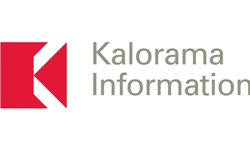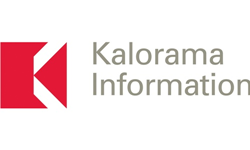
“The market for liquid biopsy testing, still in its infancy, is rapidly evolving as vendors develop and commercialize innovative new technologies.”
ARLINGTON, Va. (PRWEB)
April 30, 2022
There are over 40 companies active in the $1 billion global market for liquid biopsy diagnostics and monitoring tests. And demand is growing swiftly, at a projected compound annual growth rate (CAGR) of 29.5% over the next five years, as patients, clinicians, and payors increasingly accept liquid biopsy as an alternative or complementary procedure to traditional tissue biopsies, reports leading medical market research publisher Kalorama Information in the new report, The World Liquid Biopsy Market. Kalorama Information ultimately forecasts the global market for liquid biopsy diagnostic tests will approach $3.6 billion by 2026.
“The market for liquid biopsy testing, still in its infancy, is rapidly evolving as vendors develop and commercialize innovative new technologies,” says Bruce Carlson, publisher for Kalorama Information. “In a very short period of time, the market will more than double from its current size as of 2021.”
Liquid biopsy, which is also known as fluid biopsy, encompasses a collection of diagnostic techniques that use biological fluid specimens to provide information in the diagnosis and monitoring of diseases, particularly cancer. Blood is the most commonly tested sample type, but urine, ascites, or pleural effusions can also be used for liquid biopsy. Currently, tissue biopsies, combined with imaging techniques, are the standard methods used in the diagnosis of solid tumors. However, these methods have many limitations, leaving opportunity for the development of other diagnostic technologies.
Presently, North America, and specifically the United States, is the largest regional market for liquid biopsy. The majority of participants in the liquid biopsy market are based in the U.S., and many focus their attention and marketing efforts exclusively on the U.S. market. Consequently, over half of liquid biopsy revenues generated in 2021 were estimated to be from the U.S. The next-leading regional market is Europe, as a significant proportion of liquid biopsy tests have been granted CE-IVD marking, granting them market access throughout the European Union, as well as other countries that recognize the CE-mark, in Europe and beyond. Future growth is expected to be robust in all regions, not just the U.S. and Europe. The Asia Pacific region is expected to see the highest growth globally, as awareness and accessibility of liquid biopsy improve.
The liquid biopsy market is largely driven by the strong demand for non-invasive cancer diagnostic and monitoring tests, and the high incidence of the disease. While current market participants approach liquid biopsies using a variety of technologies and methods, the general focus for clinical use revolves around detection of clinically actionable molecular targets that have approved therapies. Another area that is quickly gaining interest is the development of diagnostic tests for the detection of cancer at earlier stages, when the chances of successful treatment and survival are greater. These driving forces will continue to exert major influences on the evolution of liquid biopsy technology and focus.
The rising prominence of personalized healthcare is shifting how cancer treatment is approached, away from non-specific chemotherapy, and towards targeted and immunotherapeutic approaches that are selected based on the characteristics of an individual patient’s disease. Development of cancer therapeutics by the pharmaceutical and biotech industries has, for over a decade, been focused on targeting various specific cancer biomarkers. Many targeted therapeutics are approved and commercially available, and many more are in development or undergoing clinical trials. Targeted approaches require that a patient’s cancer be characterized, to determine the mutation status of a tumor, either through tissue or liquid biopsy. To further complicate matters, tumors and their metastases evolve over time, with new biomarkers arising. The growing complexity of cancer care will drive the need and use of more than one diagnostic and monitoring approach, which will increasingly include liquid biopsy.
Liquid biopsy testing has many potential applications in aspects of clinical oncology, including:
- Early detection and diagnosis/screening
- Alternative testing method when tissue biopsy is difficult/impossible, or when the primary site of metastatic disease is unknown
- Therapy personalization and monitoring – by molecular characterization of a patient’s disease, clinicians can select the optimal course of therapy and monitor efficacy over time, as well as quickly react to adjust therapy should treatment resistance arise
- Disease monitoring – to observe disease progression, tumor evolution, residual disease, and early detection of recurrence
- Prognosis of disease
Despite the perceived advantages of liquid biopsy compared to existing diagnostic methods, the market is subject to various challenges which have tempered growth. While liquid biopsy tests have been steadily gaining regulatory approval, medical associations have been slower to recognize clinical utility or include liquid biopsy in their guidelines.
Purchase The World Liquid Biopsy Market for more insights by visiting: https://kaloramainformation.com/product/the-world-liquid-biopsy-market-2021/.
About Kalorama Information:
Kalorama Information is the leading publisher of market research in healthcare areas, including in vitro diagnostics (IVD), biotechnology, medical devices, and pharmaceuticals. Science and Medicine Group supports companies seeking to commercialize the rapidly changing marketplace at the intersection of science, medicine, and technology. Comprised of industry-leading brands, Science and Medicine Group serves analytical instrument, life science, imaging, and clinical diagnostic companies by helping them create strategies and products to win markets and provide platforms to digitally engage their markets through a variety of innovative solutions. Kalorama Information produces 30 reports a year. The firm offers a Knowledge Center, which provides access to all published reports.
Share article on social media or email:

